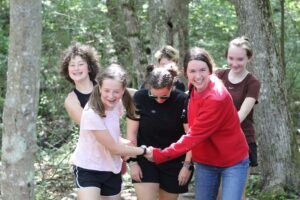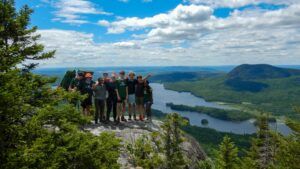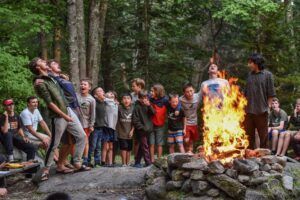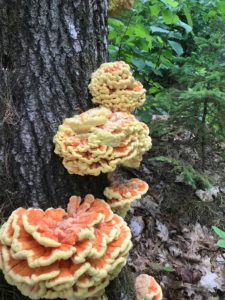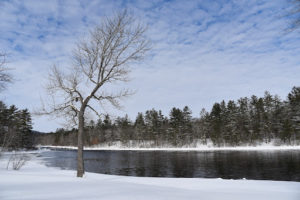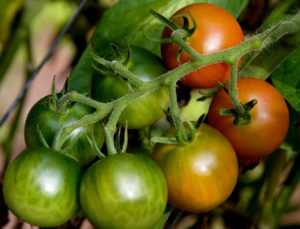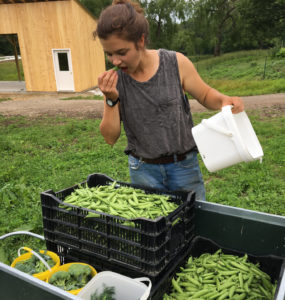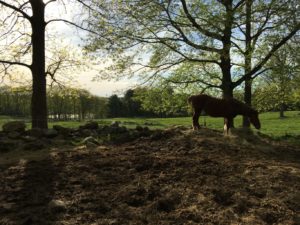Connecting Chewonki’s Future with Millennia of Land Use
When returning students and campers arrive at Chewonki this year, they may notice a dramatic break in the trees on the east side of the entry road. Last month, we began the first phase of a 3-year project to restore approximately 11 acres of forest back to grassy pasture, following the stone walls and contours of earlier farms.

This project to restore the pasture on the east side of Chewonki Neck is the latest chapter in the historical relationship between human beings and this saltwater peninsula. Farm Manager Megan Phillips says, “This most recent clearing is part of a long history of land use here on Chewonki Neck. I don’t say that to make light of the impacts of transitioning land from one use and predominant vegetation to another but, rather, to celebrate and sit humbly in the recognition that I am–we are–taking part in the story of the stewardship of this land.”
View an Interactive Timeline of Chewonki Neck
Chewonki’s Salt Marsh Farm presently encompasses 14 acres of pasture and 150 acres of woodlot, which we manage with low-impact forestry principles. The reclaimed pasture will allow the farm to provide a larger share of vegetables, meat, and milk to the Chewonki community year-round. Grazing land on the east side of the Neck will give the farmers the opportunity to use more land on the west side of the Neck for vegetable production.

The project will also restore some of the pastoral views that first attracted Chewonki founder Clarence Allen when he visited an old sheep farm for sale on Chewonki Neck in 1917. The open fields and views to tidal waters that compelled him to establish his camp here have largely disappeared over time.
The 11-acre pasture will provide greater resiliency within the farm ecosystem to deal with increasingly unpredictable climate conditions affecting growing cycles. And it will give our farmers new opportunities to educate students about rotational grazing and responsible land management. The sale of timber harvest from this area will largely pay for the cost of the project, which is being overseen by forester Harold Burnett (Maine Reach 3, farm and woodlot manager 1985-87), who has managed Chewonki’s forests for the past 32 years.

By far the largest part of Chewonki land remains forest, but the expanded farm area honors a gardening and farming legacy essential to our ethos. Clarence Allen’s wife Katherine, an avid gardener, maintained a garden for the Boys Camp. When Tim Ellis became head of Chewonki, his wife, Margaret, brought her own enthusiasm for gardening and farming. She established a large organic garden near the Gatehouse and enticed campers to help her with chores. Through the second half of 1970s, Maine Reach students expanded the gardening operation, restoring North Pasture and tending Highland cattle, pigs, and sheep. Ted Bridge-Koenigsberg was hired in 1981 to be the first farmer on Chewonki Neck since the Nasons and the Baileys in the early part of the 20th century. He added horses, cows, chickens, and even, for a short time, goats. He also managed vegetable beds and wood harvesting. Maine Reach students and summer campers participated in many aspects of the farm work.

A number of excellent farmers worked here since then. Mark Albee, who managed the farm from 1991 to 2005, had the greatest influence on the modern-day operation, says current Farm Manager Megan Phillips, who has been tending Salt Marsh Farm since 2009. Phillips, too, has had a profound impact, helping to draft Chewonki’s Food Philosophy in 2014 and integrating farming into every Chewonki program.
“Looking out over this recently opened space,” says Phillips of the clearing, “I feel a heady sense of responsibility and potential. Pasture management, like forest management, is a long-term commitment…I feel buoyed by the sense of what this transition will come to be.” She’s already committed to what the land is becoming in this latest iteration: “rolling hills, patches of trees left for shade. I see the future fence lines and the cows and sheep that will graze there, and I hold an awareness of the increased meat, vegetable, and fiber production that will nourish the Chewonki community in future years.”

Phillips has been following the timber harvesting closely, educating students and staff at every stage. In November and December, trees were removed and sorted according to destination. Roughly 35 percent of the roundwood (not including the tops and branches) will go to sawmills, with the remainder going to a pulp mill. Pine logs are going to two Maine lumber companies and some will be exported to Canada. The spruce and oak logs are being delivered to a buyer in Palermo. Most of the treetops and branches will go to a biomass plant in Livermore Falls.
In February, if things go as planned, a subsoiling machine will grind remaining stumps and branches within the top four inches of the soil to establish a proper field. Next summer, the farmers will amend the soil, based on testing, and then seed it. By summer 2019, there will be cows and sheep grazing in rotation there.
“Daily, I feel the responsibility inherent in stepping into the relationship between human beings and land, and seeking to manage our farming systems ecologically,” says Megan Phillips.”In farming and expanding our farm to include this historical pastureland, we support and are in turn supported by the land itself.”


